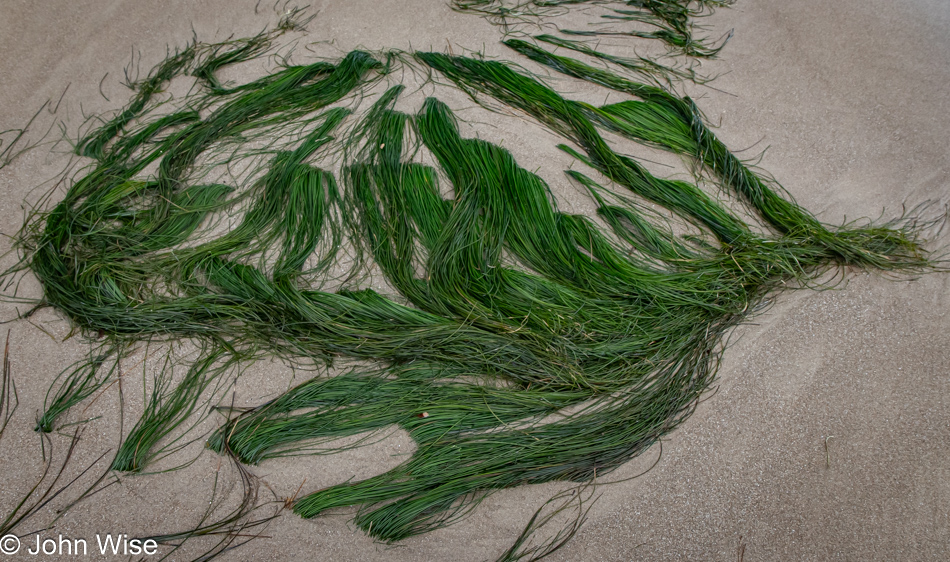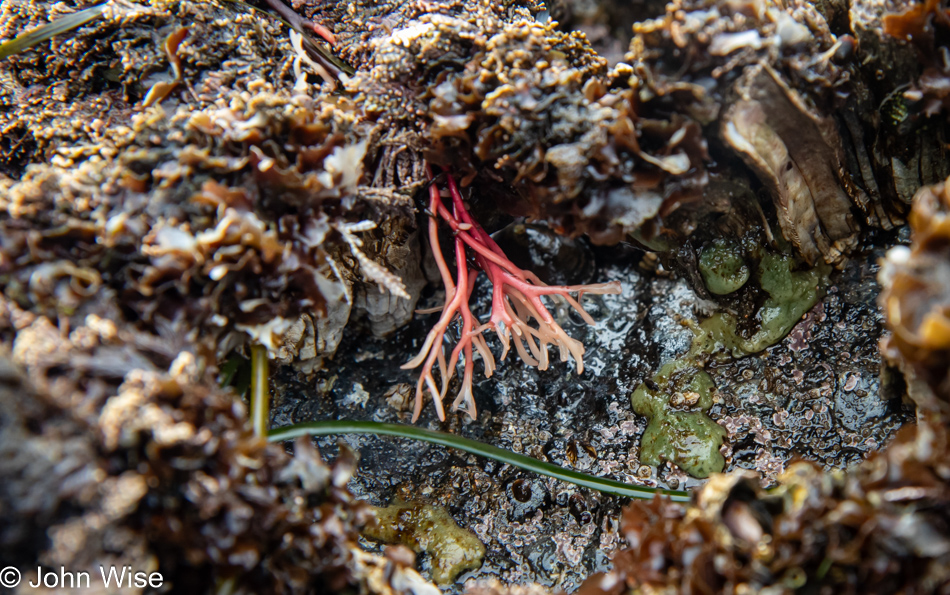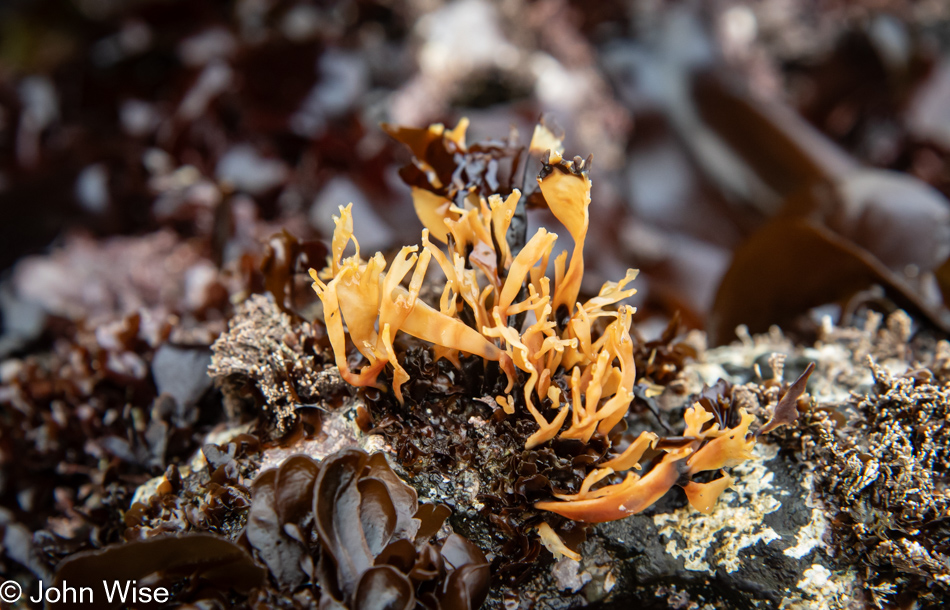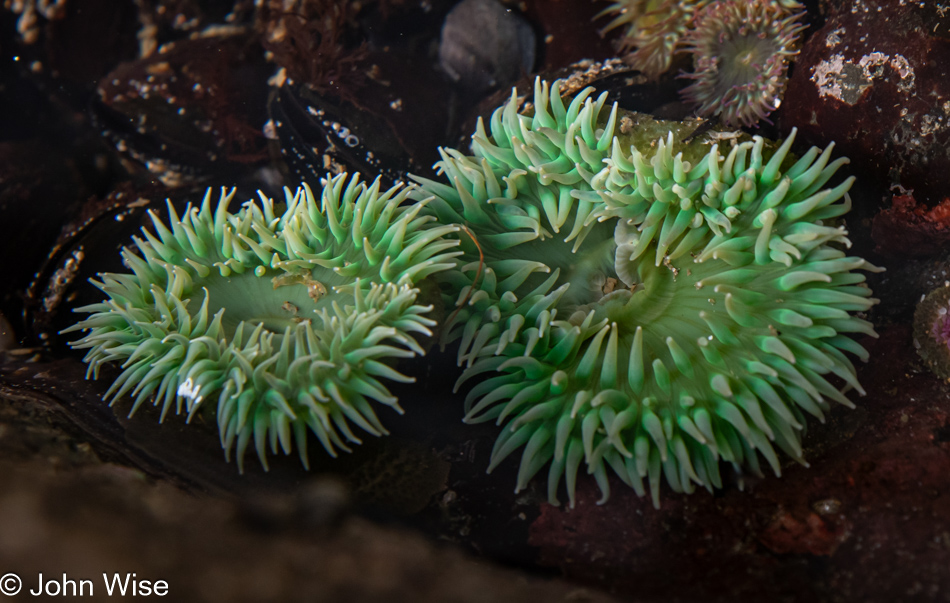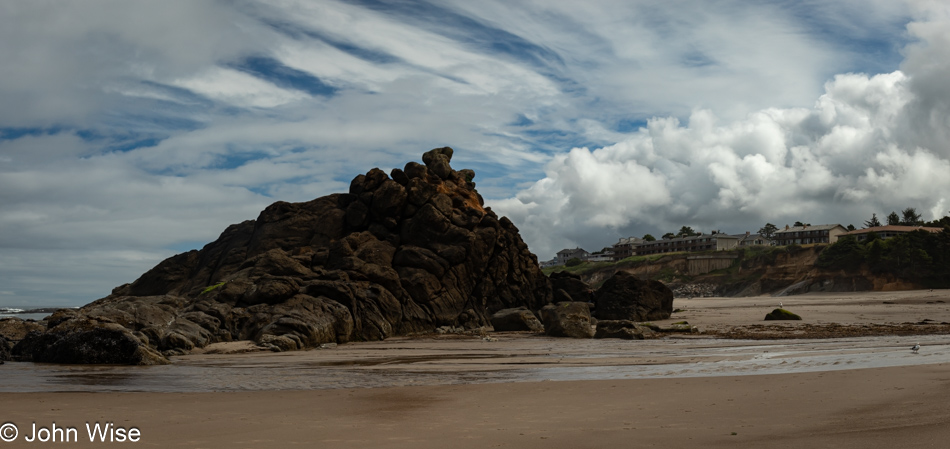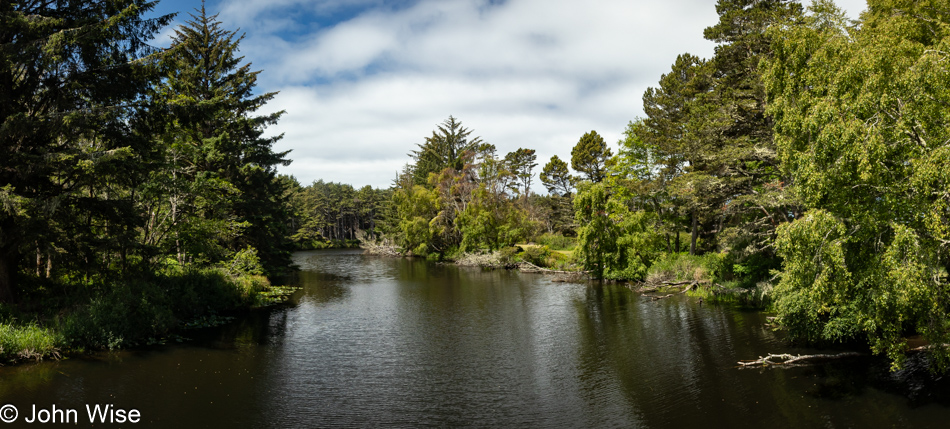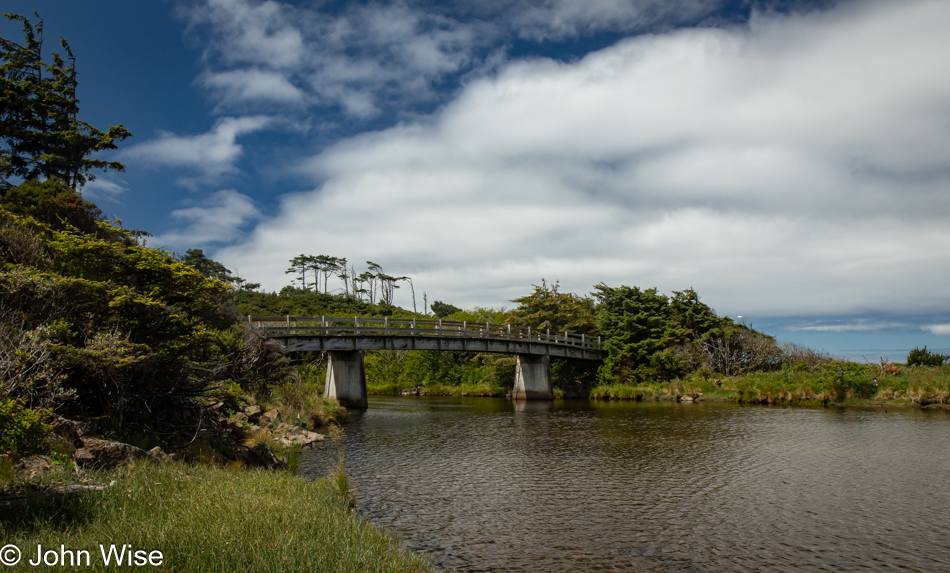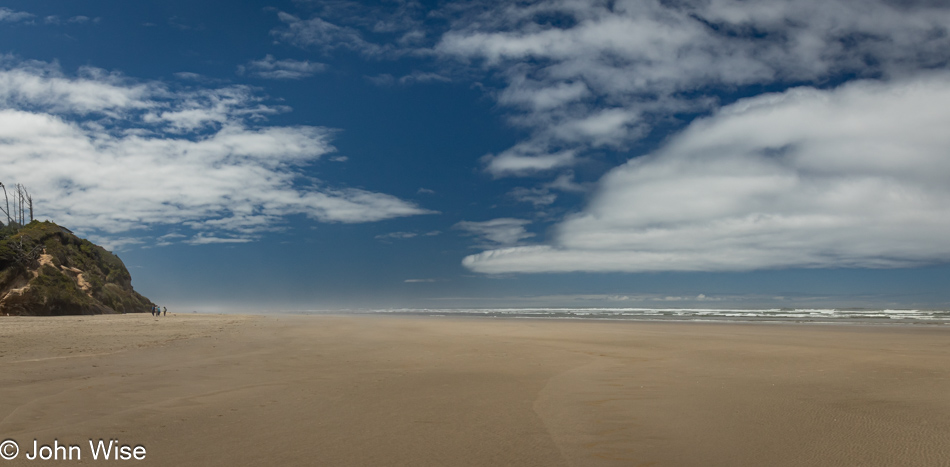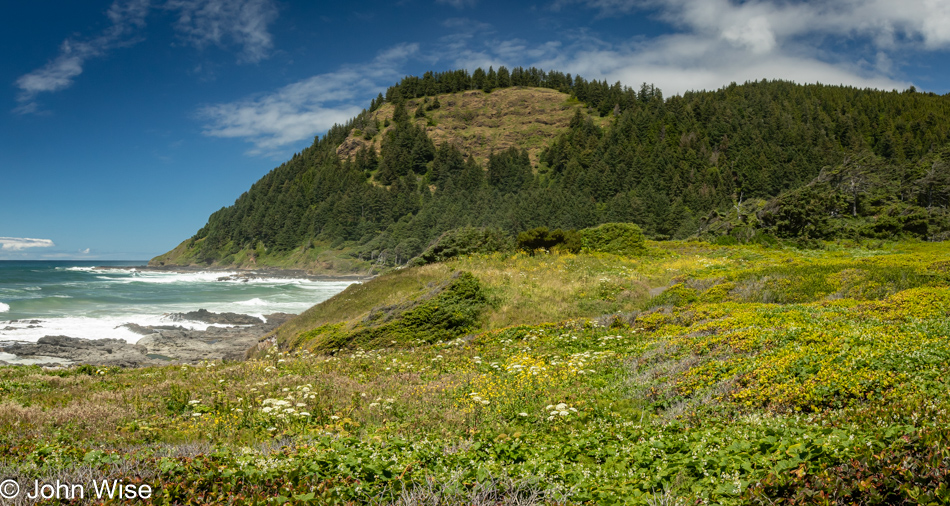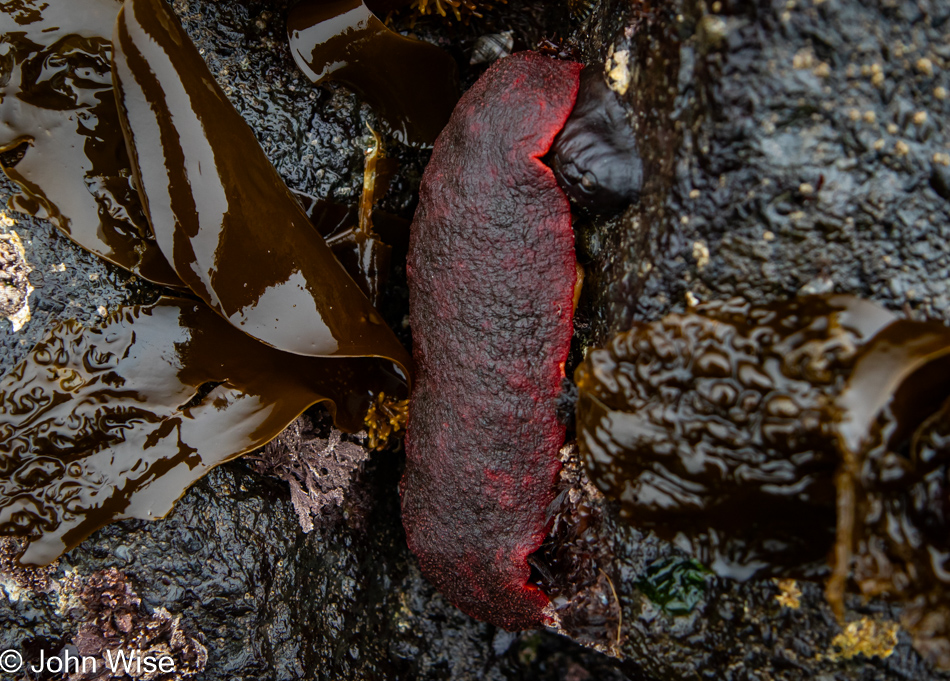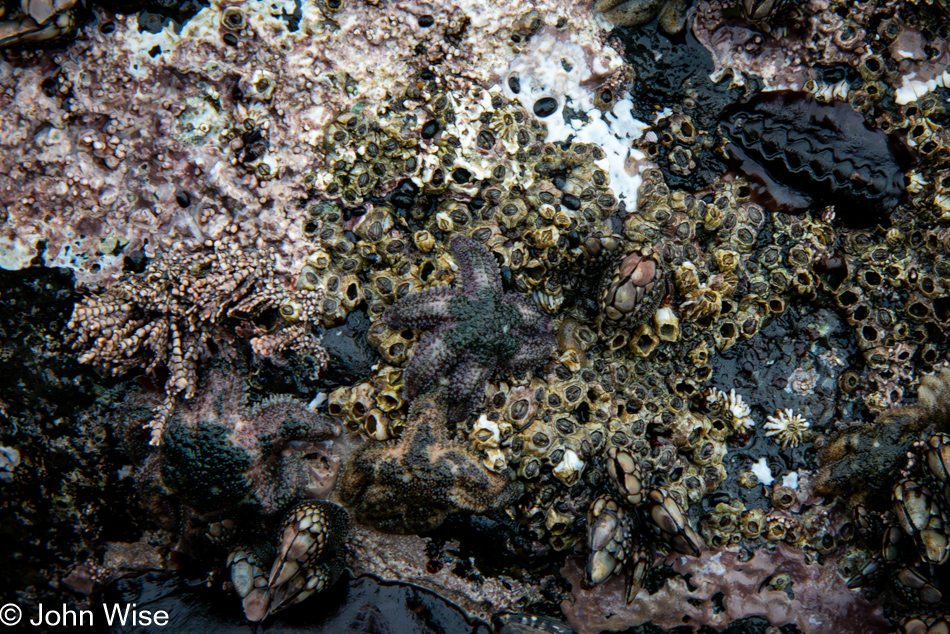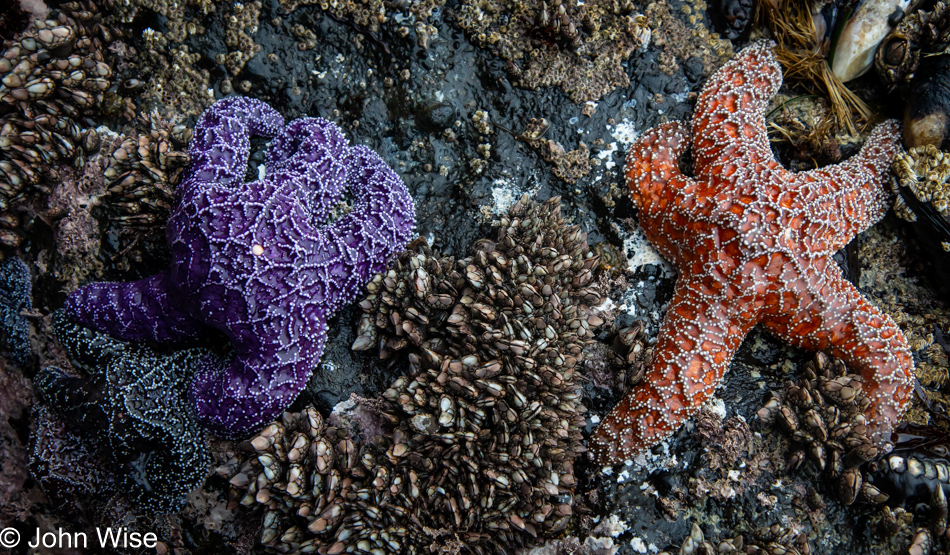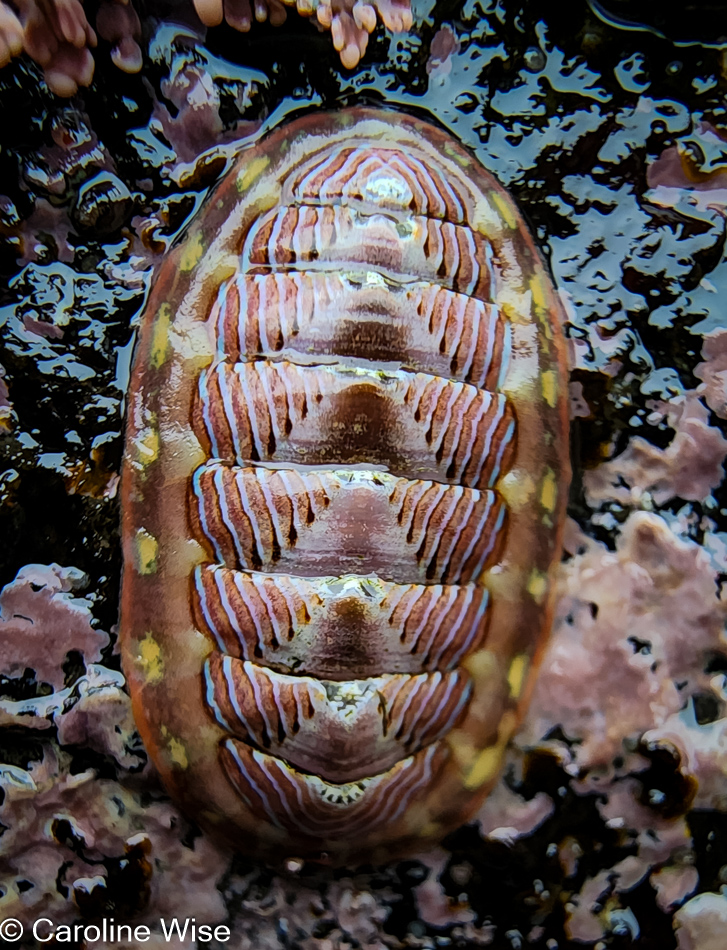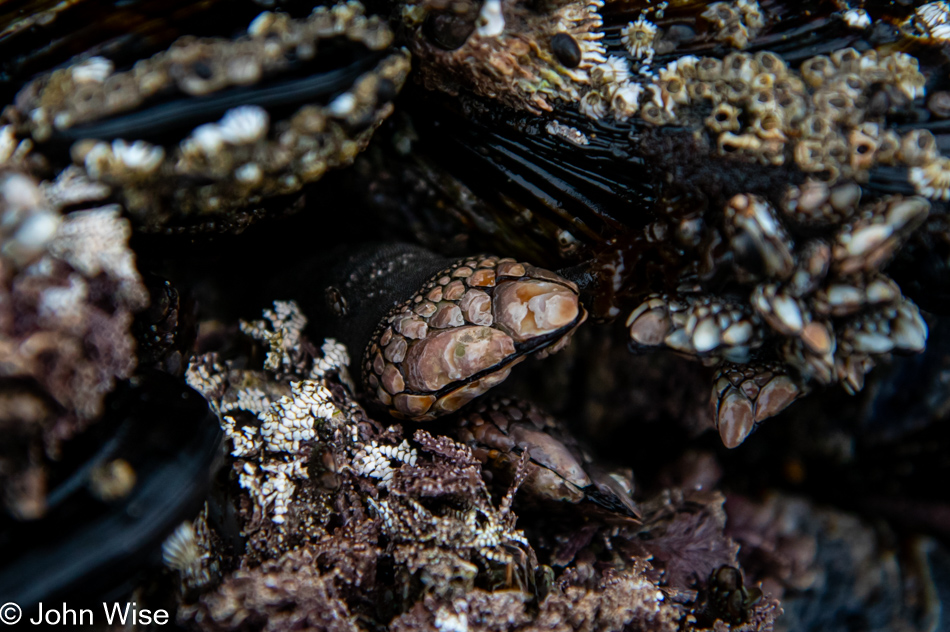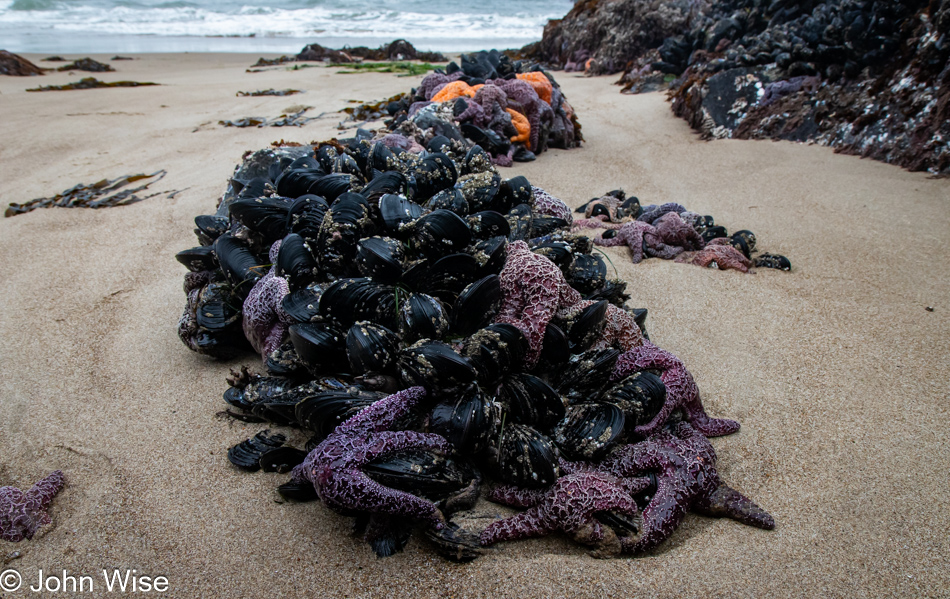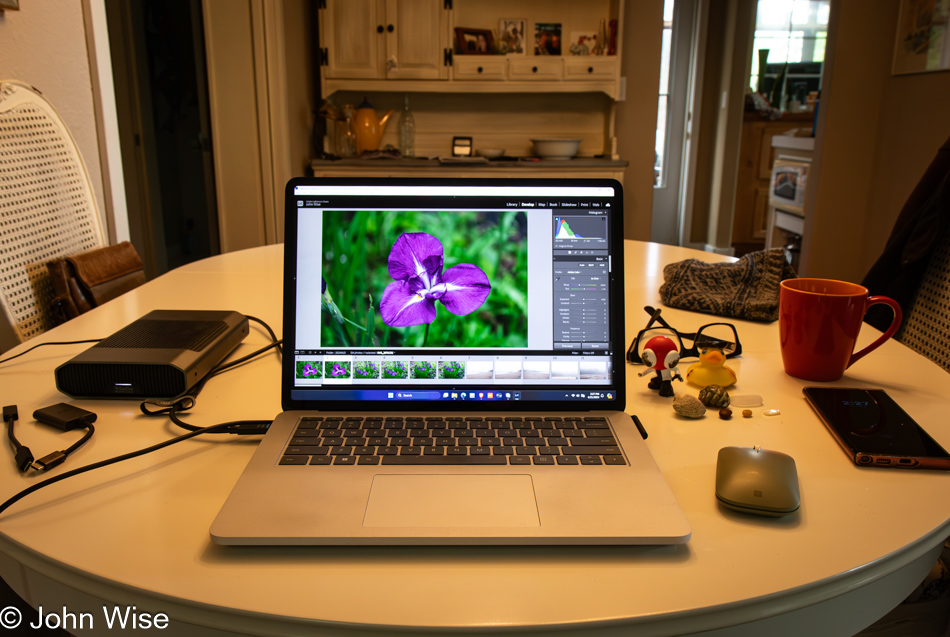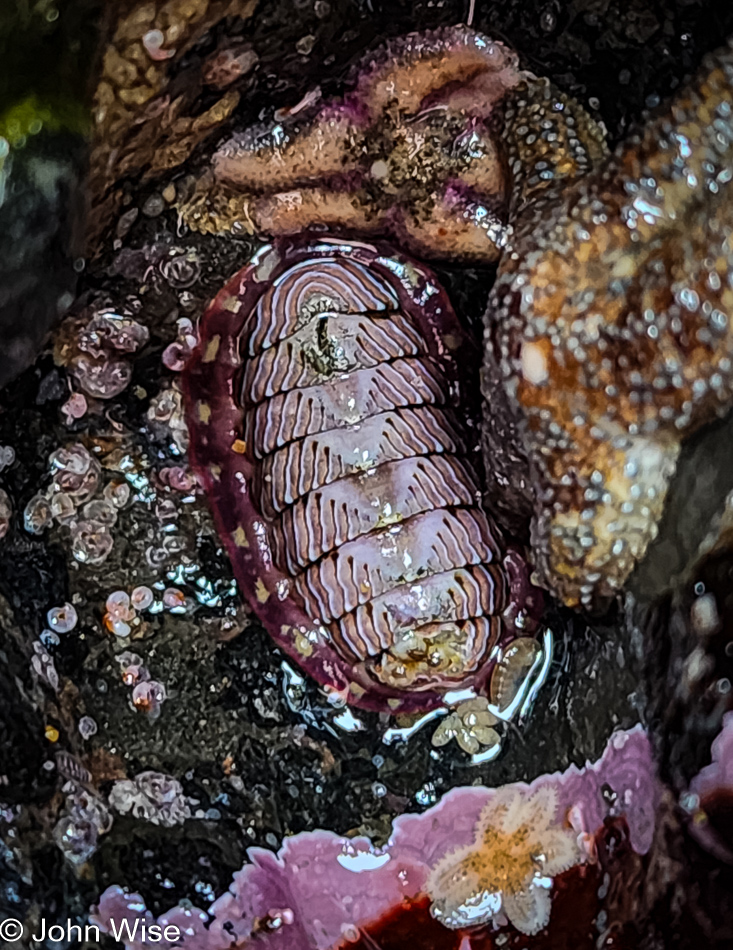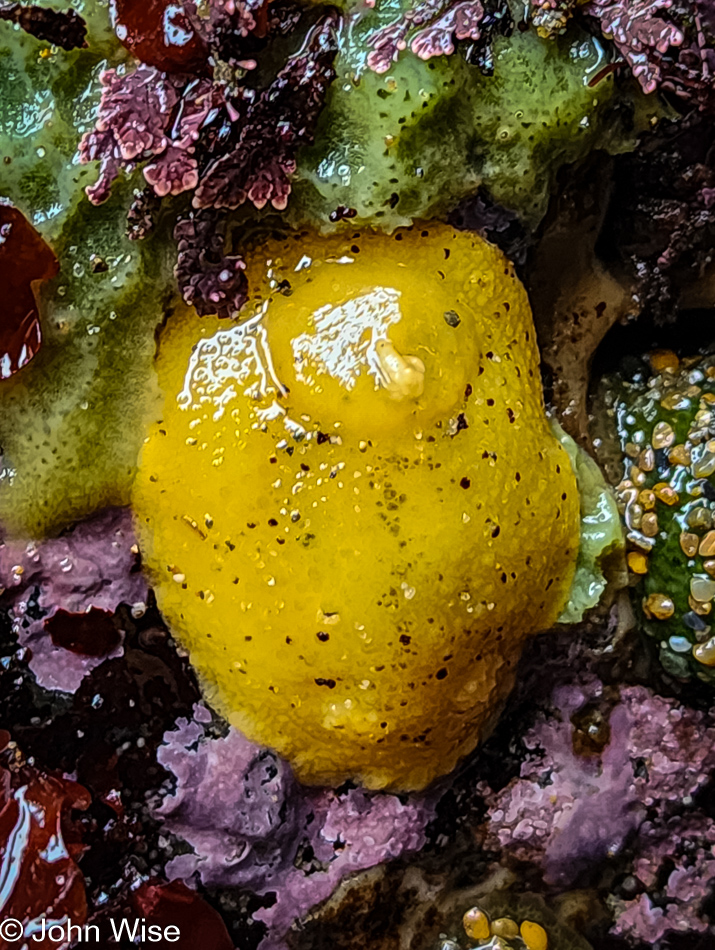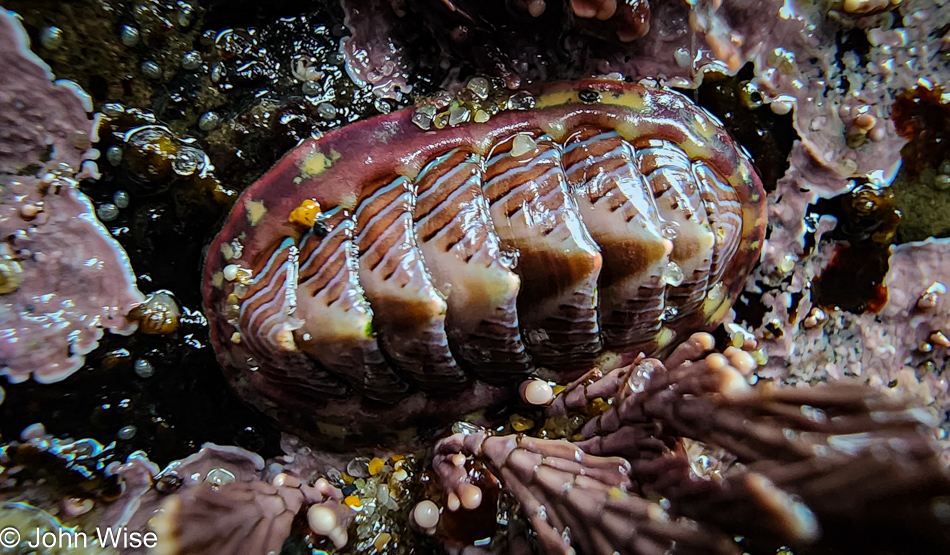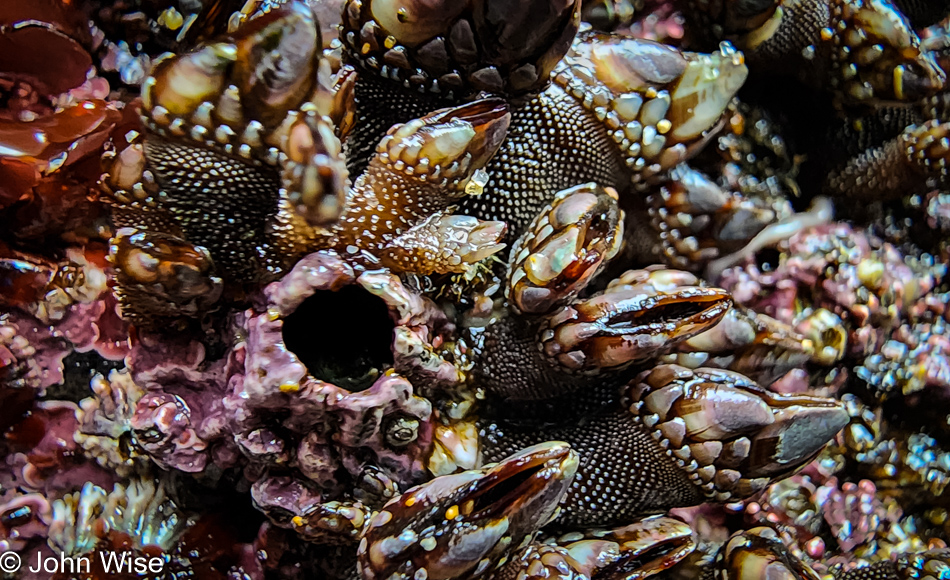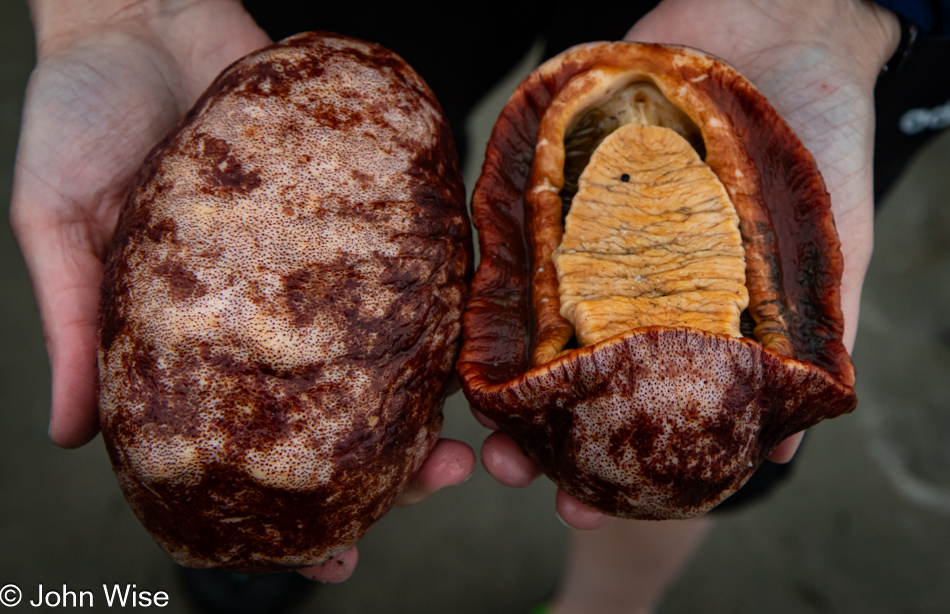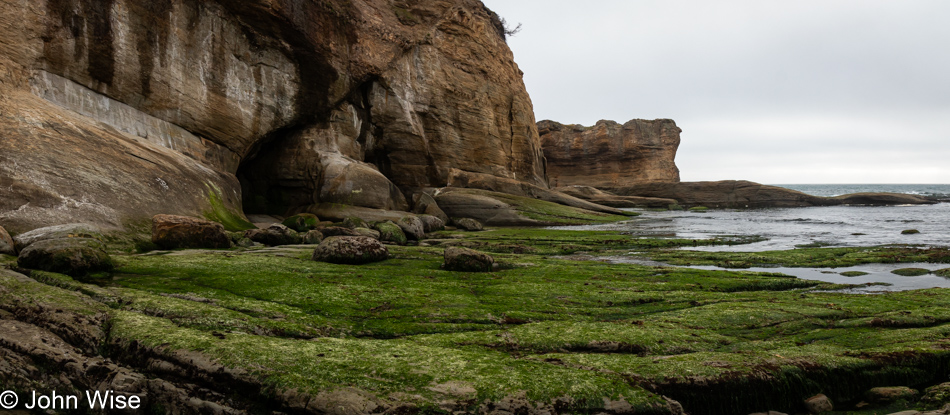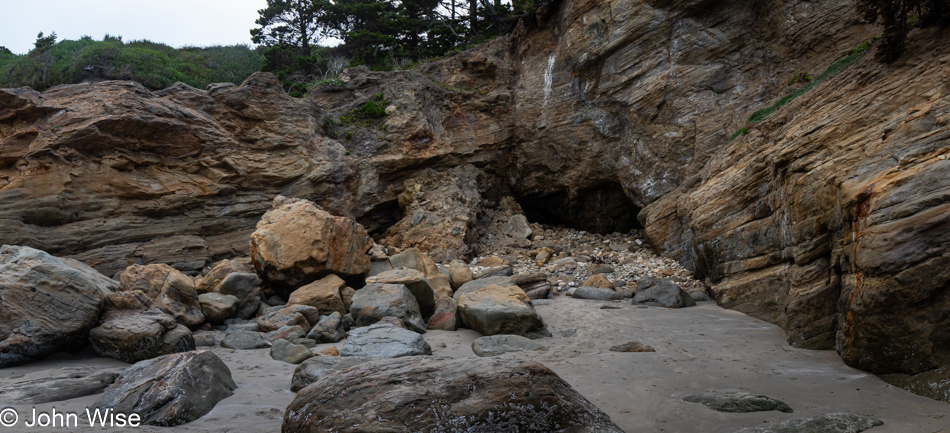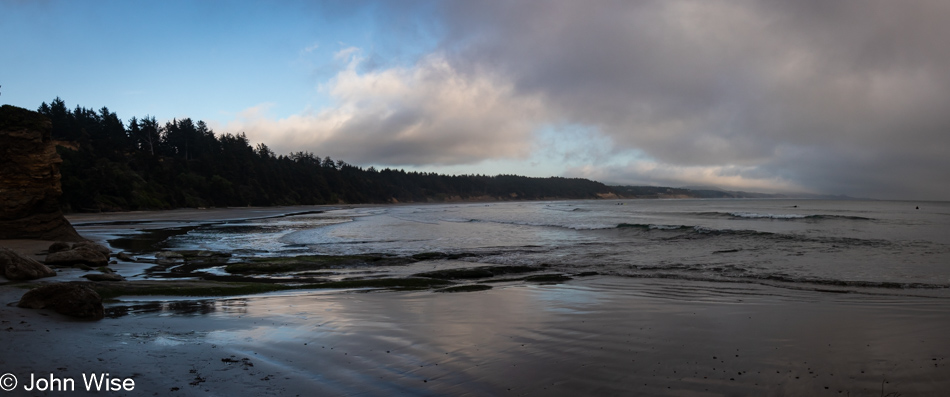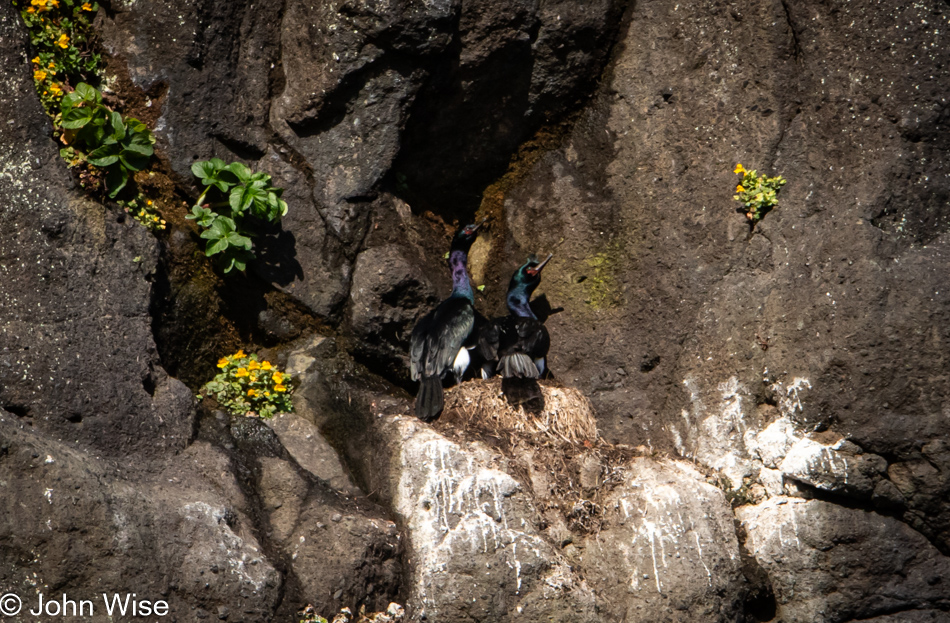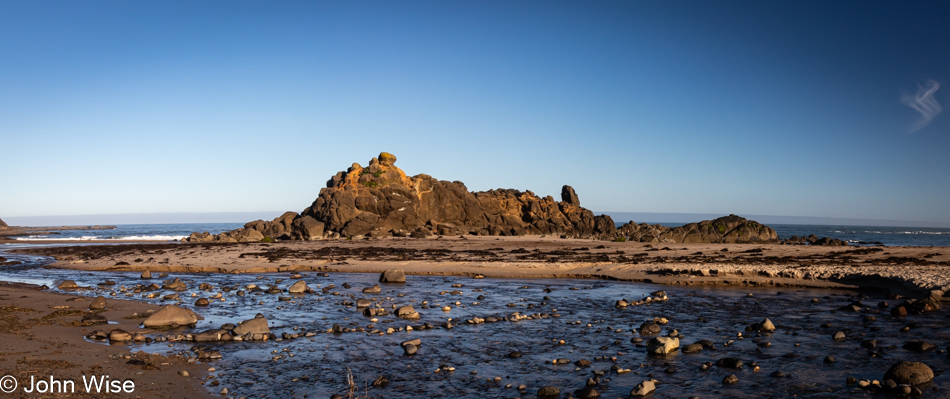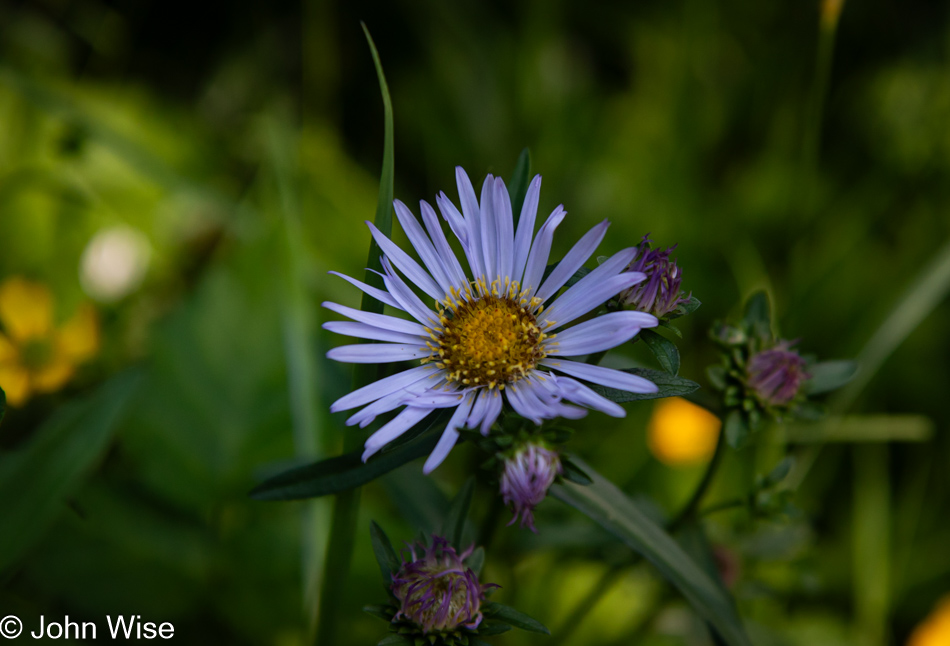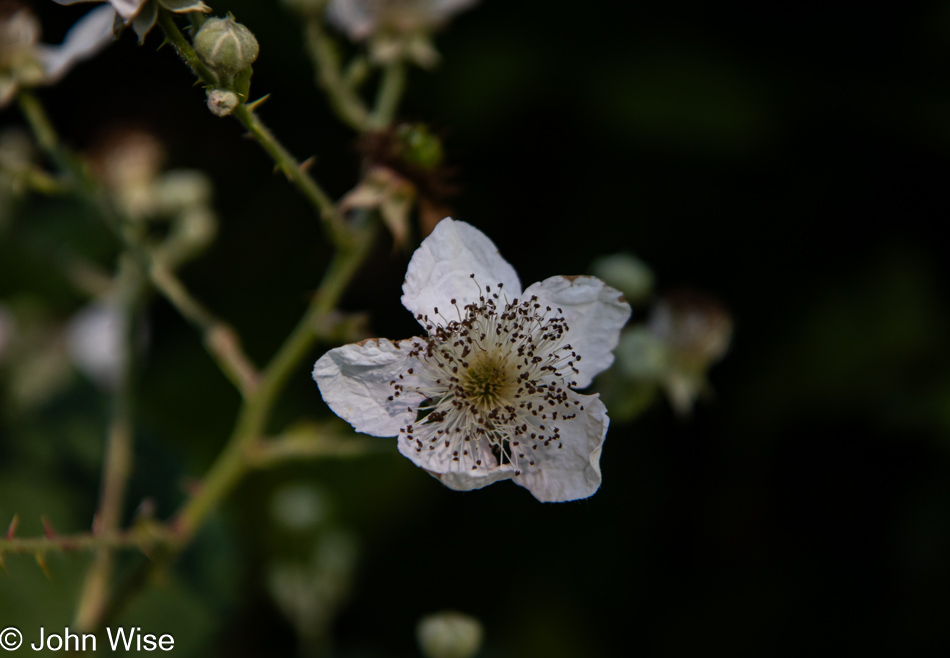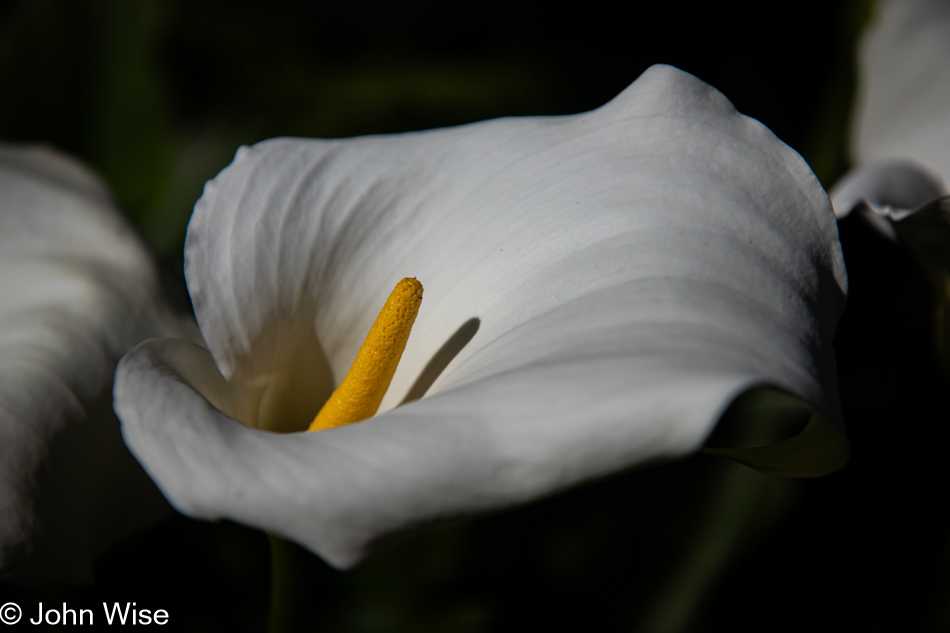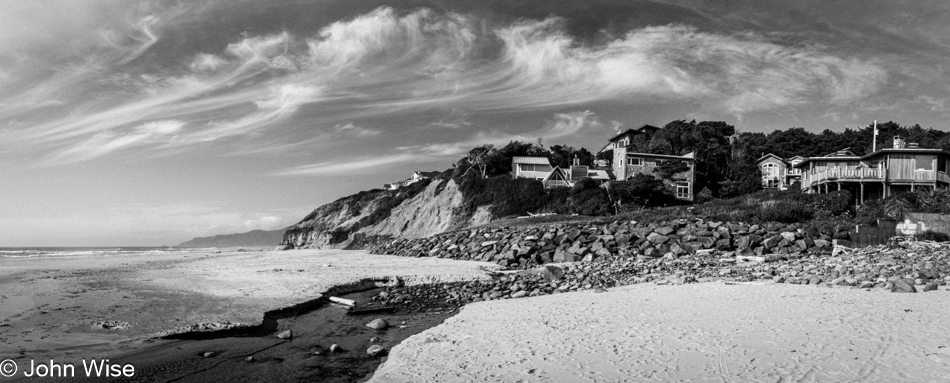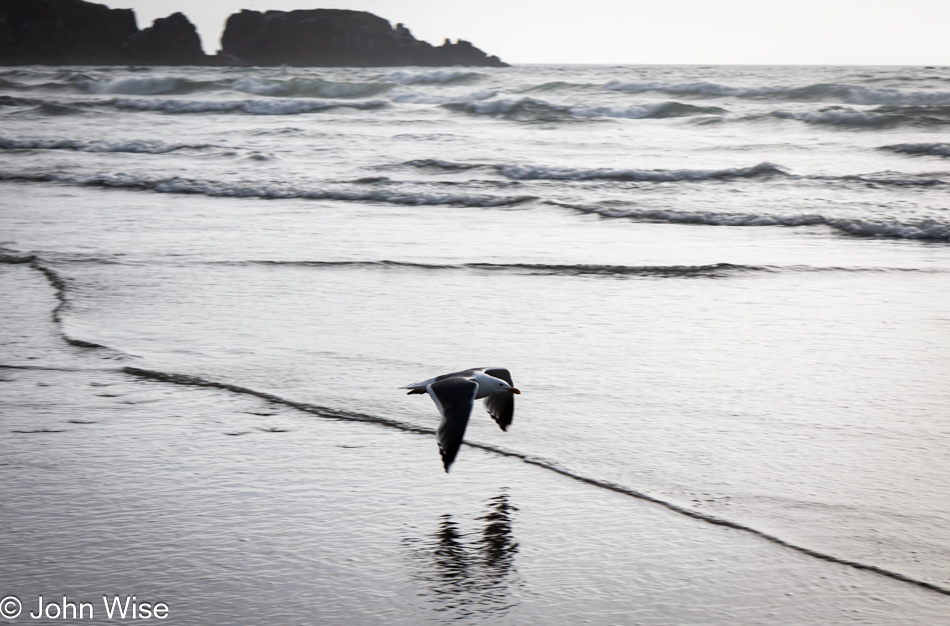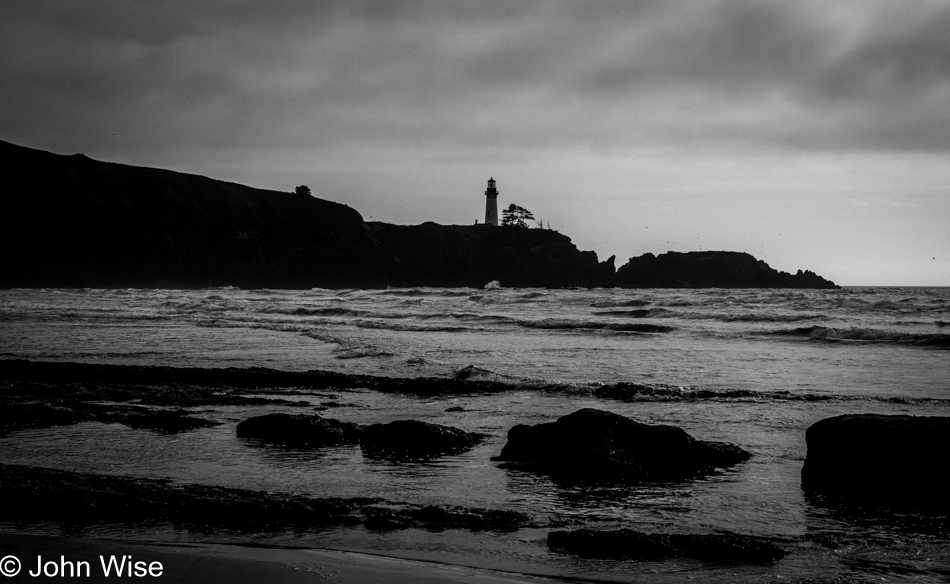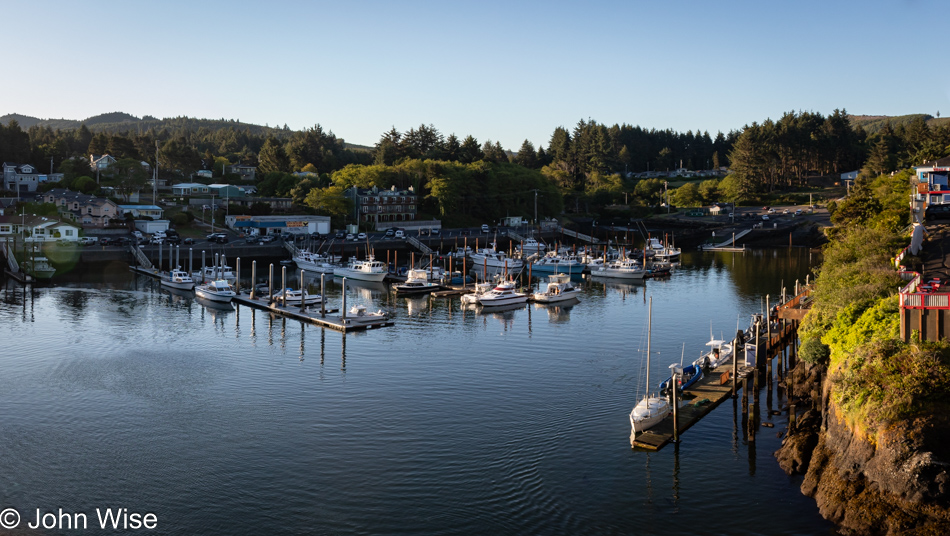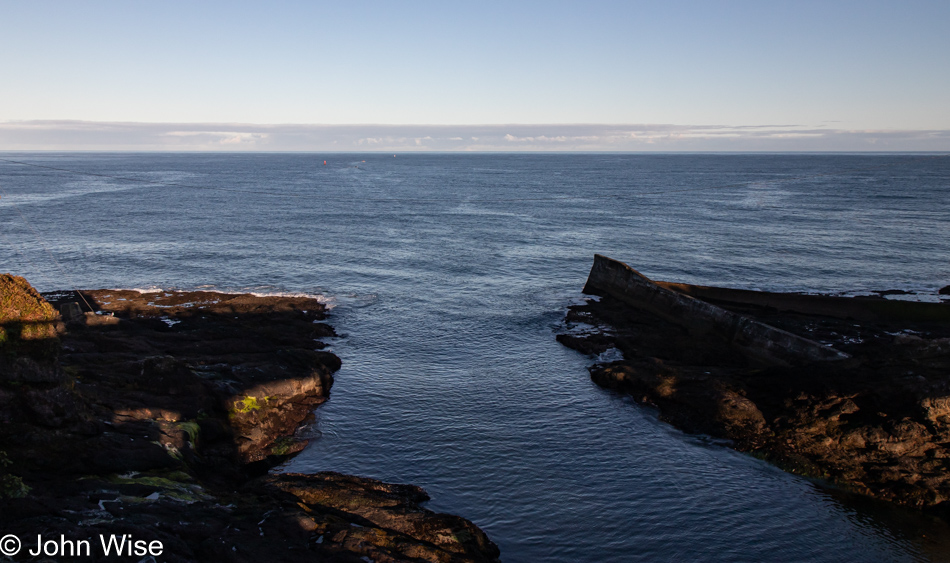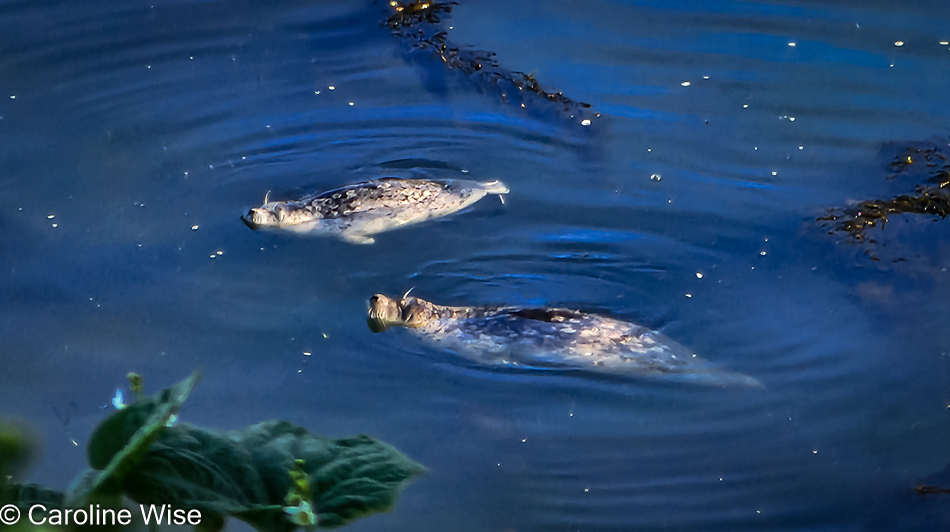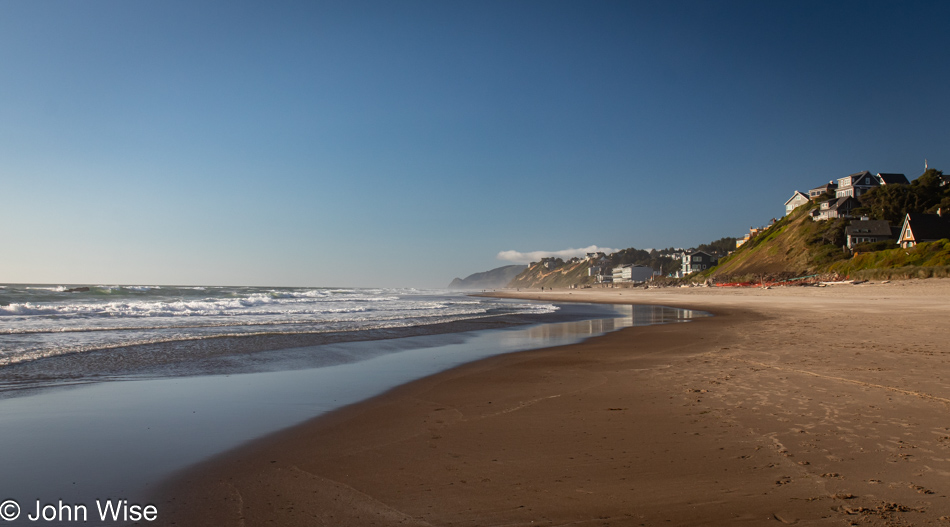
I start to see the risk of becoming a hermit here on the coast in the Pacific Northwest. Here we are on Saturday, and I was a bit grumpy getting out as I knew we’d be experiencing the weekend crowd. Already earlier in the week, we had some morning rain that created a bit of reluctance for a beach walk that would require a rain jacket and leaving the camera somewhere dry. Then there’s the traffic. During the week, it’s the guys in pickup trucks needing to haul ass to a job site. It is funny that law enforcement never seems to have one of them pulled over for speeding. While I’m at it bashing the local police and sheriff, they seem eager to catch speeders in personal non-commercial vehicles and absolutely reluctant to do much, if anything, about all the people illegally camping at waysides or on beaches. I can only assume that’s because they know that working people on vacation or a weekend getaway have the money to care for fines as opposed to those sleeping wherever they can find a place. Anyway, back to the subject, getting to the places you might want to visit during the day, such as your shopping, requires a load of driving up and down the coast, or you can drive 50 miles inland to visit Costco. Interestingly, there are no Sam’s Clubs in Oregon, but there is an IKEA in Portland.
Then there are the weekends. Add a kite, corgi, or classic car festival to the mix, overflowing trailhead parking areas, and long lines at particular coffee drive-throughs along with our inclination to focus on what’s bad out there, be it traffic, temporary visitors, long waits at restaurants, etc., and we can easily begin convincing ourselves that the great outdoors are not as great as they once were, so let’s stay in our nest and feed a desire for isolation. We’ve only been here a couple of weeks, and I’ve already seen hints of this behavior in me. Maybe this helps me better understand why we meet people all the time who don’t know the places only 20 miles north or south of where they live.

Our destination for tide pooling this morning was up north of Road’s End State Recreation Site, starting at the Logan Road Wayside. Initially, I could only wonder why Caroline directed us to this beach, seemingly nothing but a wide, flat expanse loaded with a zombie horde wandering aimlessly north as though they were searching for brains. The lack of visibility worked in our favor as the crowd quickly disappeared into the fog, and after about 15 minutes of walking, I was still wondering out loud, in the gratingly annoying voice whining husbands are great at affecting, “Whhhhy are weeee heeere?” Finally, the rocks and tide pools came into view.

Days of visiting tide pools following however many previous years we ventured onto the coast during low tide, and still, we are surprised by what we find. I suppose there’s a kind of tragedy that as we gaze out upon the sea, we cannot see for ourselves how the habitats right before us are likely as vastly different as the landscapes onshore and how they change as we move up and down the Pacific coast.
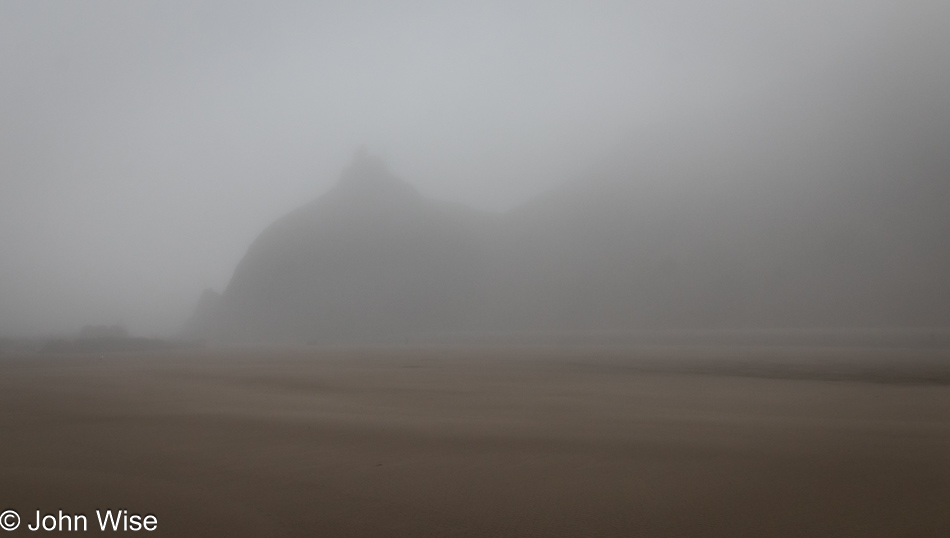
Road’s End Point and not God’s Thumb, as I thought when we were down here. Higher up and behind this shorter peak in the fog is the culmination of the Knoll Trail that terminates at an overlook of the beach.

It’s now the Monday after the weekend that saw us out there, and I’m way behind on this writing stuff because not a word was noted about the evenings/late afternoons once we returned to the house. While I feel/felt confident that of the more than 400 photos I shot on this day, these 33 were the absolute must-include images, it is now already 1:00 in the afternoon and finding my words struggling to escape my fingers when this pair of eyes signals my brain that a nap could be conducive to refreshing the creative mojo, I think I might be lying to myself and looking for an excuse not to finish this post. Then I take inventory and try looking into the hearts and souls of all these mussels and barnacles, and I listen to their collective voices asking, “If you won’t tell our story, who will?” So I persist, except I think I’ll move on to the sea star in the next image and circle back around to the mollusks later.

Thanks for the distraction El Jefe the Sea Star. Hey, you’ve not everted your nasty stomach on a fellow sea star, have you?
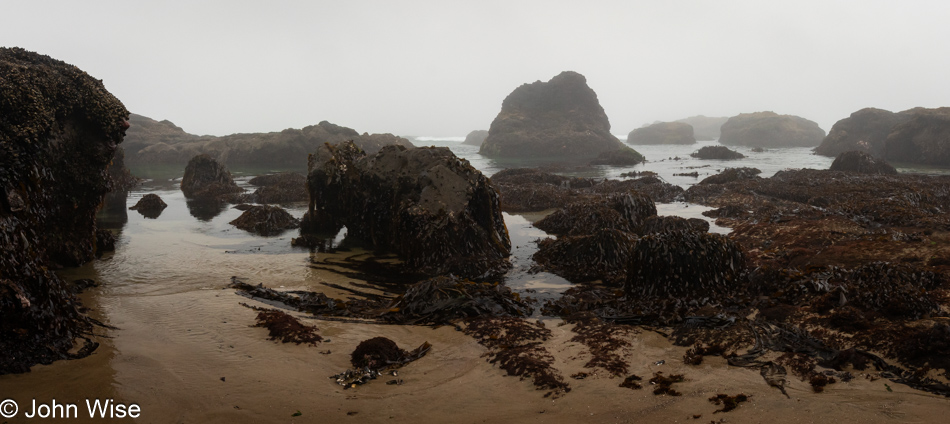
Of the couple dozen people who were on the beach going north, I can only surmise that after a half-mile of walking, they realized that the commitment to explore this phenomenon was not worth the effort. Their loss is my gain as they are not milling around and trampling everything, so I have all the time in the world to capture the high-action energy of seaweed and mussels out of their natural habitat where they fall victim to my zippy camera.

For years, Caroline has recommended I collage three or four photos together so I can break out of this toil of writing for every photo, but like a barnacle on a mussel shell, I won’t budge from my silly idea, no matter how bored the reader is, or out of ideas I might be.

An alien landscape that’s easy to visit without a rocket ship, no mass shootings going on here, no dystopian robot driven by AI threats of creating anxiety for what lives in this ocean, and it’s free to come look, so where are the crowds we might see in Disneyland? Of course, they are not here because there is no phallic sex appeal of a dorky billionaire talking it up, there’s no sociopath ready to kill all the sea stars for fame, and artificial intelligence is only coming to steal your personal job, so take your Biden Bucks (the ones nobody has because of the horrible inflation, really, the worst inflation anyone has ever seen, yep, all thanks to Sleepy Joe), pack up your TikTok camera and visit somewhere that makes you look beautiful, an exotic getaway with millions of others, basking in the glow of, “I’m gonna be internet famous.”

Meanwhile, we cretins will trudge in the quicksand of the ocean floor, listening to the silent screams of 8 trillion mollusks begging for us to return their precious ocean, Little do they understand in those tiny mussel brains, we are not their God that took the ocean away, nature just does weird shit that impacts life on Earth, get over it. If you survive, the sea will return; now stop praying in your creepy mussel language.

Look what emerged from the sea vulva.

Today, I learned about epibiosis, which is the relationship in which one organism (the epibiont) lives on the surface of another organism (the basibiont) without causing significant harm to the host. While I won’t go into all the details about how this benefits both parties, I just want to remind Caroline and others who might be judging us that I am not a sponge, which is a totally different phylum. I’m more like an arthropod while my wife is my mollusca-momma.

Check out my peduncle; oh damn, is that a limpet making my peduncle look small?

If I stop and take inventory, considering that I’m not rich or famous, at least my last name is Wise, unlike Christian Slater, who shares a last name with the sea slater, a.k.a. the sea roach.
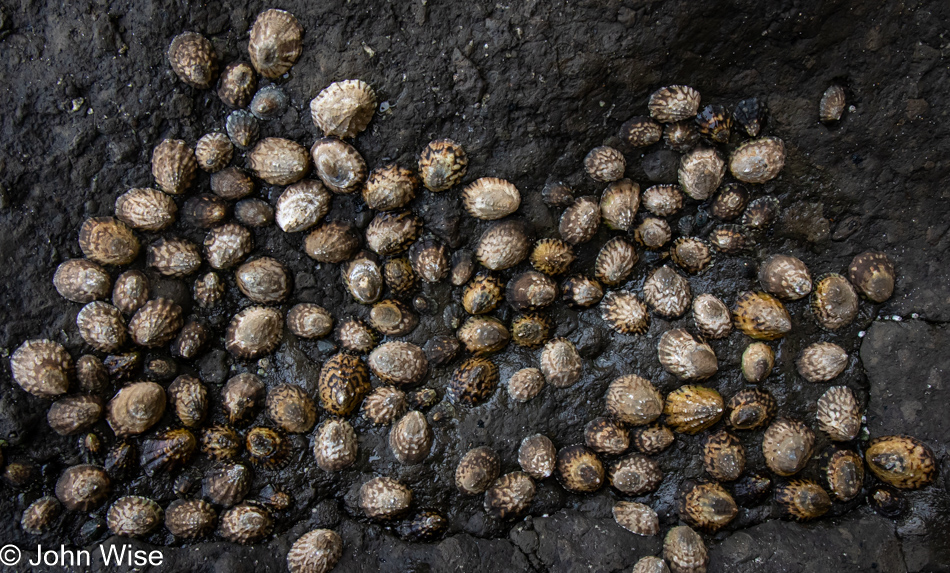
I could go all innuendo here, too, but my wife’s been groaning about the other stuff, so I’ll just let you know that these are Fingered Limpets and leave it at that.

I don’t know how many spats you’ve seen in your days, but this is a mighty fine example if you ask me. More than likely, you’ll be asking, “What is a spat? Isn’t that like a lover’s quarrel?” A spat is where baby blue mussels fall as they leave their veliger state of floating around like plankton to begin their benthic existence (benthic, meaning living at the bottom of a body of water). Right about now, I see six mussel larvae in my mind’s eye. One is wearing a larval barnacle, another a limpet of the same minuscule size, the third has algae draped over it, the fourth maybe a grain of sand, but you get the idea. They are drifting, kind of dancing, in the current of the sea singing, “Macho Mussel.” Seriously, I think that has the potential for inclusion in a Disney film.

You are witnessing a first for Caroline: an encounter with an octopus. This curious mollusk, which shares some history with those mussels to the tune of nearly 500 million years ago, was crawling along on the sand and not looking all that good for having done so. A kid with a stick (I know that you are probably already shivering) was trying to help it back into the sea, but I think all he really would have accomplished was puncturing it. That’s when I politely asked him to step aside as my fearless wife would gladly and gently assist the creature back to its world. Caroline jumped right in, carefully scooped up the octopus, and carried it back to the water, unsure the weakened cephalopod was going to spring back into action. As she held on, rinsing it in water and trying to somehow nurse the octopus, it started latching onto her hands, reassuring Caroline that it was regaining its strength. Ready to set it free, she realized that it was now in control and waited for it to decide to disconnect, not that my wife cared one bit. While she understands full well that the following is a bit of magic thinking, she can’t help but consider that these incredible encounters are a kind of karmic payoff for all the trash she picks up along the seashore. This will forever be a high point in Caroline’s life because not everyone gets to encounter wild octopuses.

Because adventurers do not live on experiences alone, it is time for a late breakfast and some very needed diner coffee.
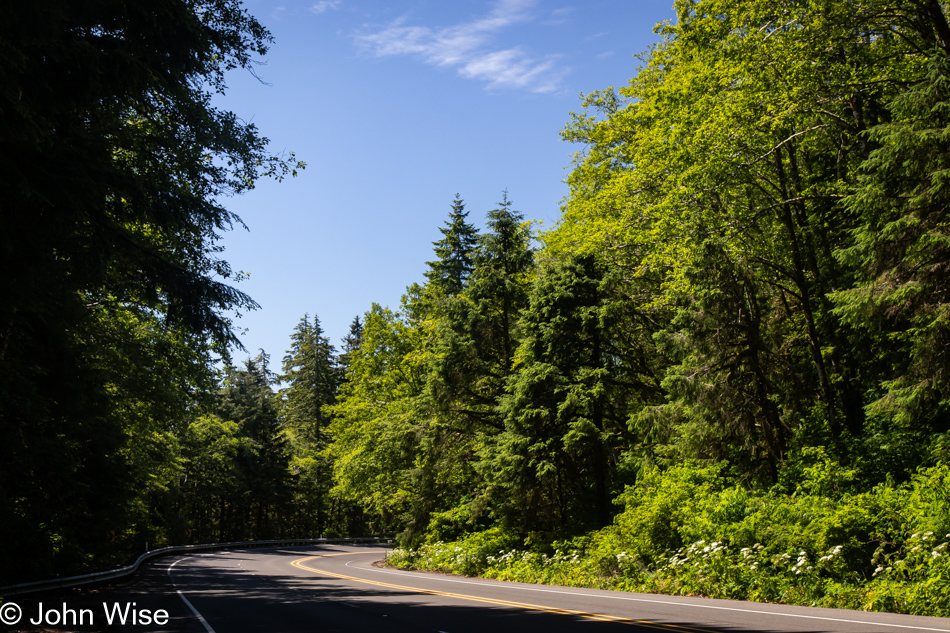
After so many late fall visits to Oregon, the intense vibrance of the green is an elixir that has us verging on the ecstatic. In a random small pullout on Highway 101 for no other purpose than trying to capture a hint of a reminder, we found this…

…a stretch of ripe salmonberries. Having just finished breakfast 15 minutes earlier, we could only eat so many, plus we didn’t bring a container to carry them back to the house. Salmonberries are unlike blackberries or raspberries; they are almost an acquired taste, one gained quickly by the two of us.
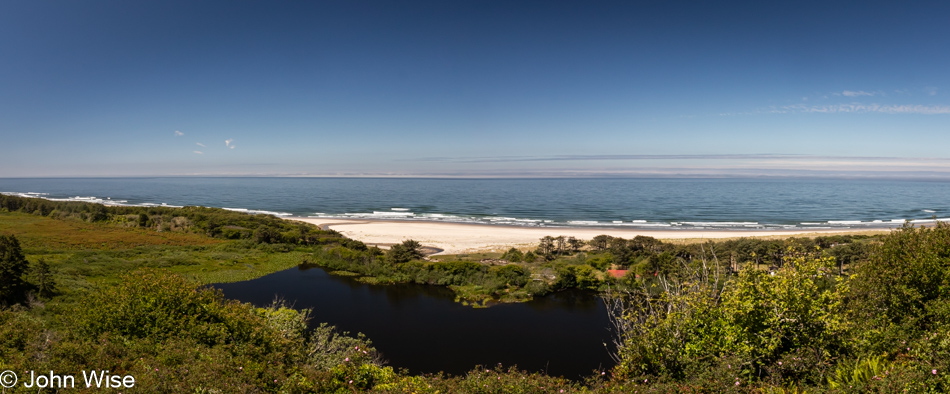
A few miles prior to reaching the Pacific Crest Wayside in Neskowin, we pulled over for a small farmers’ market in a shady field and didn’t leave empty-handed. As we did have a cold bag in our car, we bought a couple of packages of Stella Falls gouda, two bottles of Silas Riesling wine, and some local Nestucca Bay butter. Next stop, ice.
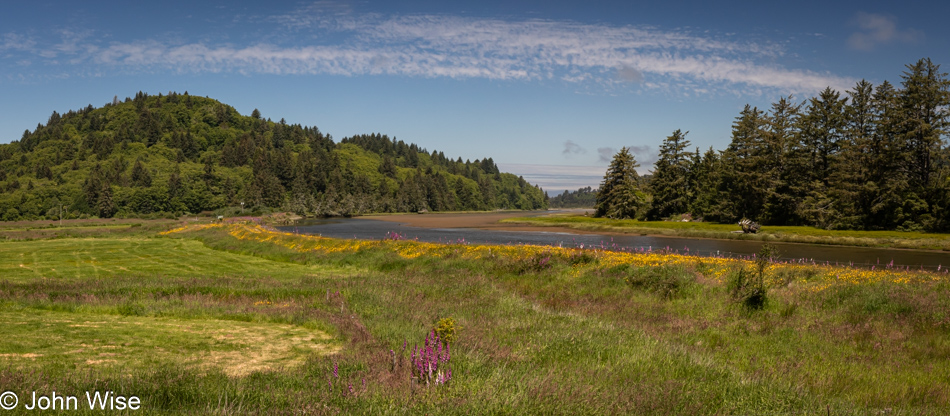
The next stop was not ice; it was this view of a ton of foxglove, various hues of green, and the Nestucca River.

Nope, still not ice. Looking out over Nestucca Bay towards Pacific City is Chief Kiawanda Rock, partially and mysteriously obscured by the fog lingering over the shore.

Reaching the beach in Tierra Del Mar, we had a whole bag of ice in the cold bag and hoped it wouldn’t melt too quickly and leak into the car. Not pictured is our stop at a gas station market in Pacific City where we picked up said ice and Caroline impulse bought a regret that she’s yet to try: Raindrops Gummy Sushi. I’d wager she’ll send them to someone in Germany so she doesn’t need to suffer the indignity of trying them herself. [Nope, I’ll try them myself, pinky promise! Caroline]
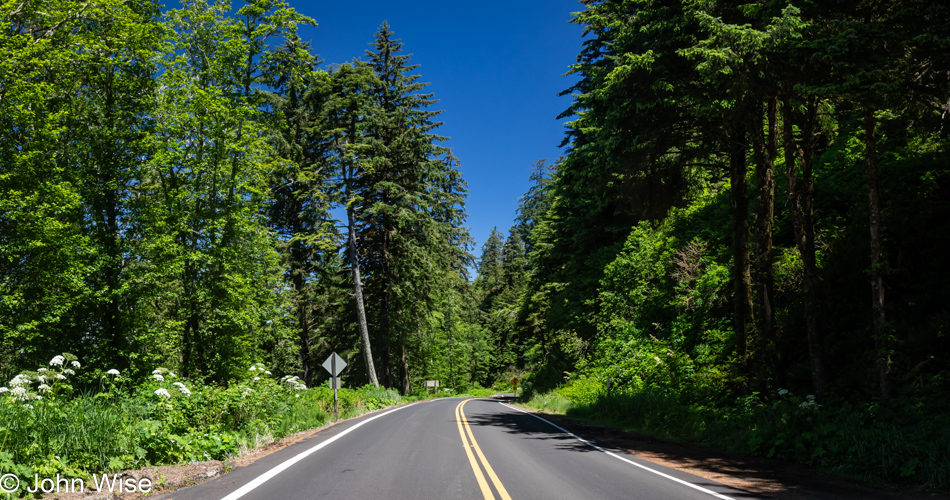
We’re still going north on a mission of the utmost importance for our impending road trip back to Arizona starting on July 4th. All will be revealed with the last photo of the day. It was at the Cape Lookout Trailhead when we pulled over for this shot up the road.
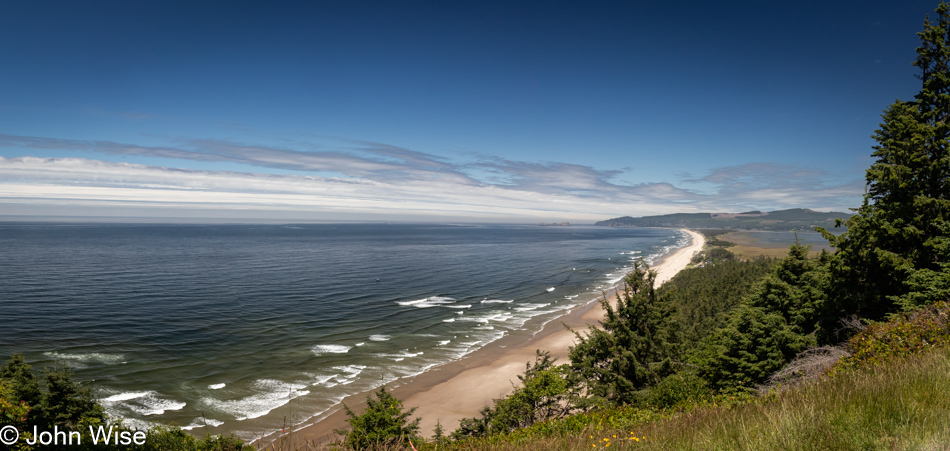
That long stretch of beach is on the Netarts Spit, which ends at the Netarts Bay Shellfish Preserve inlet just across from our next stop, assuming nothing else distracts us.
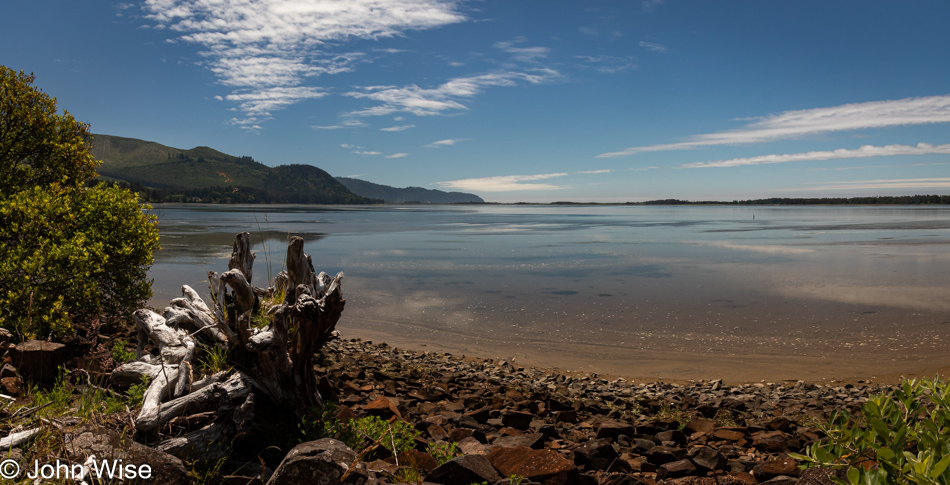
Our first distraction here at Netarts Bay and, somehow, the last one before reaching the Schooner Restaurant in Netarts proper, where we took an outside table for the first time and ordered some of their incredible Oysters Rockoyaki. We only experienced this Oysters Rockefeller meets the Japanese-inspired Oysters Motoyaki about six years ago, but now, if time allows, we’d never forego another encounter.
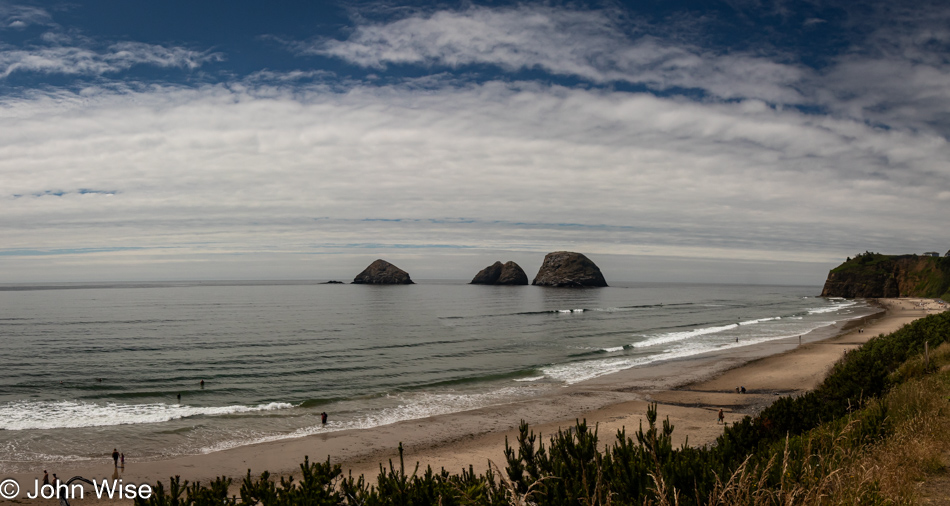
Had we driven directly to our destination, we’d have been there in under an hour, whereas our method was able to extend that to six full hours. We skipped walking down on this stretch of coast at Three Arch Rocks and Tunnel Beach, knowing we’d walked it before, plus there was a beach coming up we’d never visited.

This is the Short Beach Trailhead, with a rather steep trail and stairs.
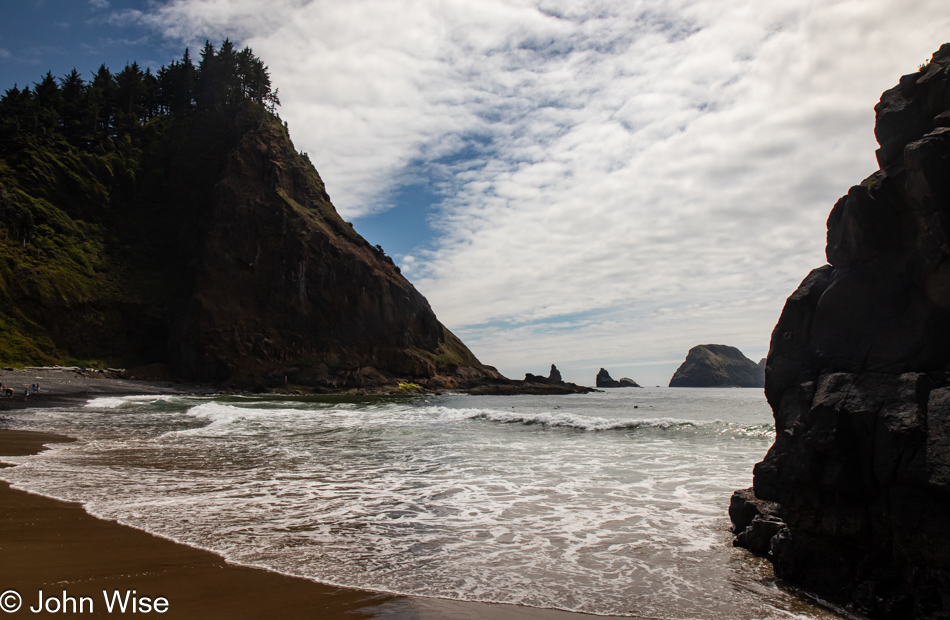
This mostly rocky shoreline lives up to its name, which is about a quarter mile long and completely isolated: it is a short beach.

After ten years of being closed, the Cape Meares Loop Road is now open again. It’s not the same path we’ve driven and walked previously because that area is still an active landslide threat (which is what closed the road), but it is a detour with a fairly steep climb up and over a mountain connecting with the Bayocean Spit on Tillamook Bay. The new part of the loop opened in November of last year, and from how new everything still looks, it seems as though it’s not much in use yet.
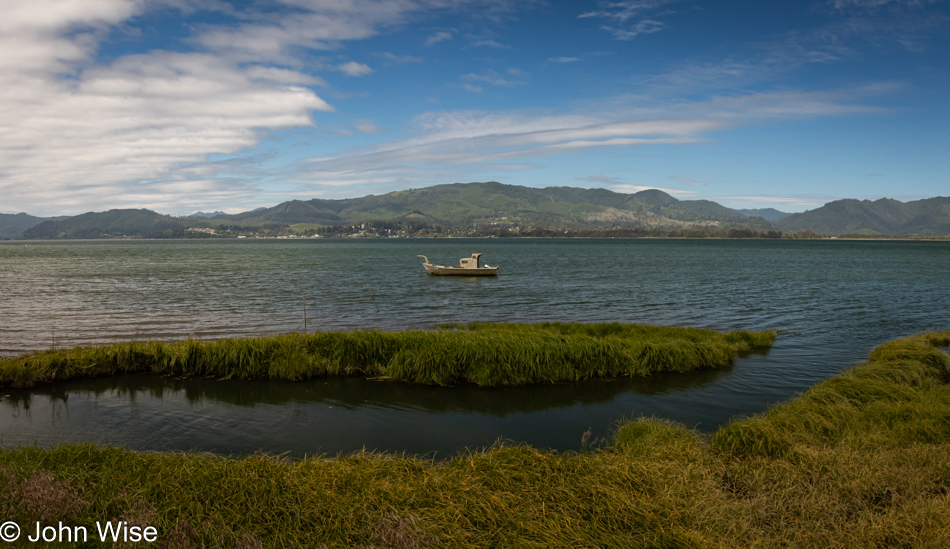
Tillamook Bay and a big hint about our second destination of the day after the tide pools at Road’s End.

We are NOT at the Tillamook Cheese Factory; we are somewhere much better, the Blue Heron French Cheese Company, also in Tillamook. While nothing has changed inside the store in the 20 years we’ve been visiting, there is now an outside area with picnic tables, a cheesy candy store that feels way off-brand, and a large, red metal barn that obscures what was once a beautiful view of the distant mountains. But we are not here for the aesthetics and the commercial accommodation of keeping families with children interested in stopping in; we are here for smoked brie. Arriving at 4:00 was almost a mistake. When I approached the deli counter, a person was just putting up the “Deli is Closed” sign. I quickly explained the error of turning our drive into an all-day affair, and she offered to go ahead and take our order for their grilled sandwich known as the Blue, including Blue Heron Smoked Brie, per our special request, along with turkey, cranberries, and cranberry sauce. With three wheels of the smoked brie put atop our ice for the drive back down the coast, the day was complete.


